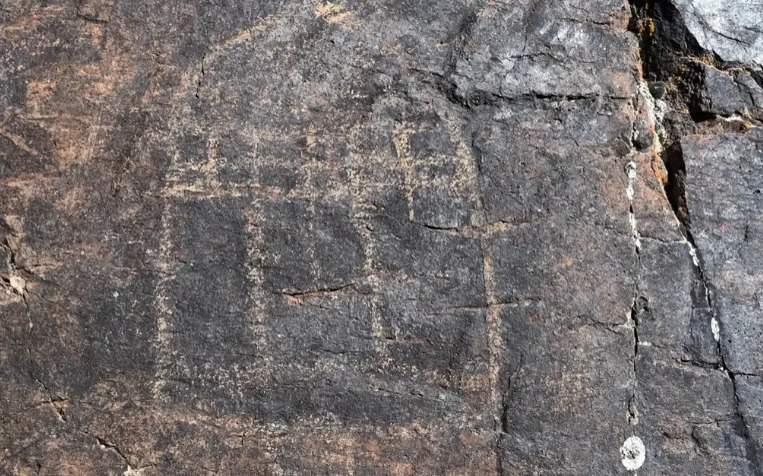Foreign media on Kazakhstan: Kazakhstan and Uzbekistan prepared strategic partnership program until 2034, Astana prepares to welcome visitors in run-up to the 5th World Nomad Games
Following the recent news of Uzbekistan’s President Shavkat Mirziyoyev receiving Kazakhstan’s highest state award, Kazakhstan and Uzbekistan have developed a strategic partnership program extending until 2034. As Astana prepares to welcome visitors for the upcoming 5th World Nomad Games, Kazinform News Agency offers a weekly review of international media coverage about Kazakhstan.
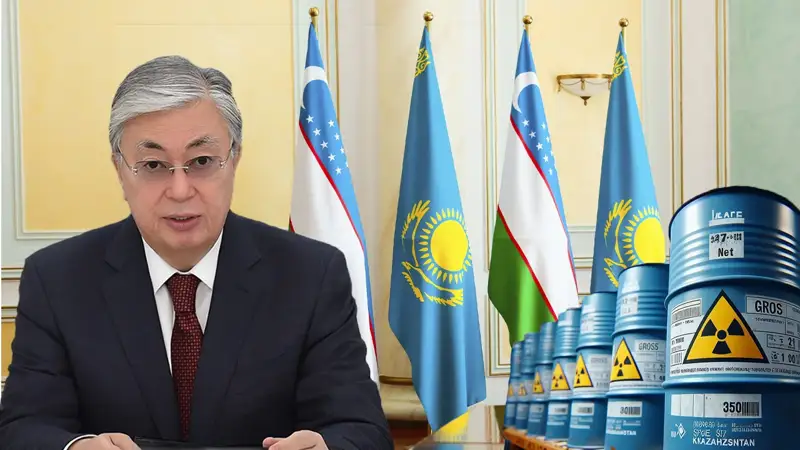
Embassy of Uzbekistan in New Delhi: The President of the Republic of Uzbekistan was awarded the highest state award of the Republic of Kazakhstan
The Embassy of Uzbekistan in New Delhi announced that during his visit to Astana, a ceremony was held to award the President of the Republic of Uzbekistan, Shavkat Mirziyoyev, with the “Altyn Qyran” (“Golden Eagle”) Order of the Republic of Kazakhstan.
President Kassym-Jomart Tokayev solemnly presented the Leader of Uzbekistan with the highest state award of the fraternal country.
Having expressed words of sincere gratitude on behalf of the multinational people of Uzbekistan, President Shavkat Mirziyoyev noted that such a high award is an assessment of joint efforts to strengthen the centuries-old bonds of true friendship and good-neighborliness of the two peoples, as well as recognition of common aspirations to bring relations between Uzbekistan and Kazakhstan to a new historical level – strategic partnership and alliance.
The “Altyn Qyran” Order is awarded to statesmen for exceptional contribution to strengthening friendly relations with Kazakhstan.
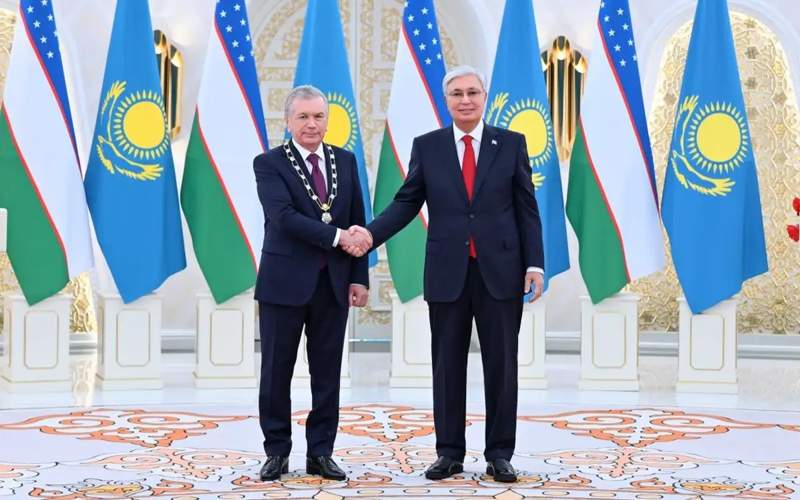
AZARNEWS: Kazakhstan and Uzbekistan prepared strategic partnership program until 2034
Uzbekistan and Kazakhstan will adopt a strategic partnership program until 2034, which provides for an increase in mutual trade to $10 billion, Azernews reports.
It is reported that special attention will be paid to further increasing the volume of trade, primarily due to the mutual formation of markets and substitution of imports from third countries. The governments of the two countries were instructed to adopt a separate program by the end of the month to bring trade turnover to $10 billion.
In order to develop industrial cooperation, a portfolio of new agreements and contracts worth $7 billion has been prepared within the framework of the state visit of the President of Uzbekistan to Astana. Among them are projects in the fields of energy, transport and logistics, metallurgy, textile, agricultural and construction sectors, as well as between regions.
The Presidents of Kazakhstan and Uzbekistan Kassym-Jomart Tokayev and Shavkat Mirziyoyev agreed to accelerate the construction of an international industrial cooperation center in the Syrdarya region of Uzbekistan, and the issue of creating a joint investment fund will also be worked out.
In autumn, the first meeting of the Council of regional Leaders of the two countries will be held in Samarkand.
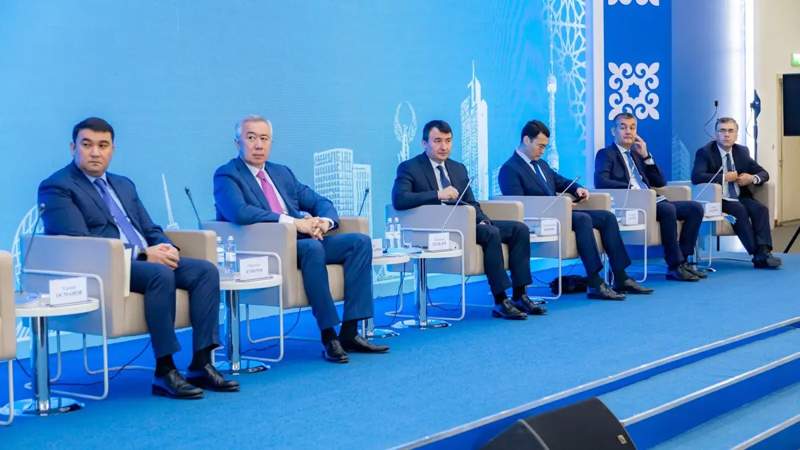
The Times of Central Asia: Kazakhstan Deepens Caspian Ports to Boost Middle Corridor Potential
According to the Times of Central Asia to boost the Trans-Caspian International Transport Route (TITR), Kazakhstan’s Ministry of Transport has started dredging the port of Kuryk to increase its depth by 1.5-2 meters. The work, done by European company Jan de Nul, will expand the port’s capacity, currently handling 6 million tons of cargo and accommodating 250 trucks.
Similar dredging is planned for Aktau. This effort is part of a broader plan to develop the TITR, linking China and Europe via Central Asia.
According to the Kazakh Ministry of Transport, the volume of cargo transportation through Kazakhstan along the TITR for the first seven months this year increased by 62%; amounting to 2.5 million tons, compared to 1.6 million tons in the same period in 2023.
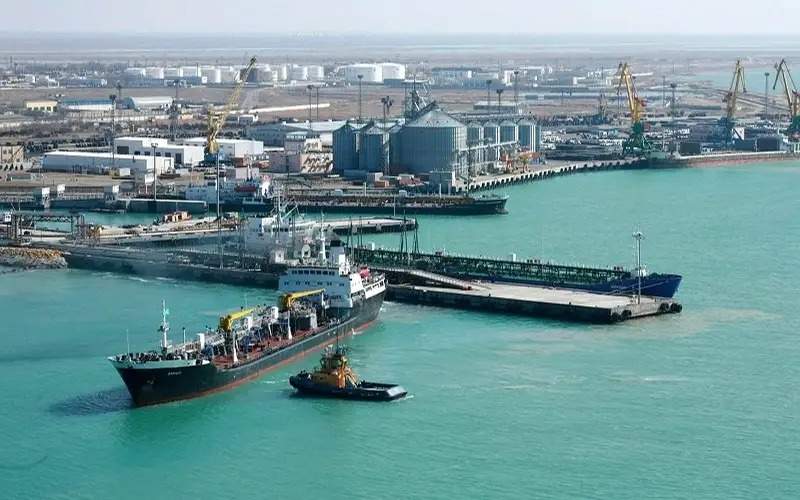
Trend News Agency: Azerbaijani Electronic Security Service, Kazakh TSARKA sign memorandum of understanding
The Electronic Security Service (ESS) under the Ministry of Digital Development and Transport of Azerbaijan and the Kazakh private Center for Analysis and Investigation of Cyber Attacks TSARKA signed a memorandum of understanding, Trend reports.
According to the ESS, the memorandum was signed during a working visit to Kazakhstan.
The memorandum covers the areas of information security and cybersecurity and provides for joint activities of the parties in the exchange of information, knowledge, and experience.
The meeting also discussed prospects for cooperation and products and services in the fields of information security and cybersecurity offered by TSARKA.
To note, the ESS continues its efforts to establish cooperation with CERTs (Computer Emergency Response Teams) and similar organizations from other countries in accordance with the Cybersecurity and Information Security Strategy of Azerbaijan for 2023-2027, approved by the decree of the President of the Republic of Azerbaijan on August 28, 2023.
On August 8, the ESS and Information Security Committee of Kazakhstan signed a memorandum scheduling joint activities on information security and cybersecurity, as well as the exchange of data and experience between the parties.

The Time of Central Asia: Astana Prepares to Welcome Visitors in Run-Up to the 5th World Nomad Games
The Times of Central Asia reports, the capital of Kazakhstan, Astana prepares to host the 5th World Nomad Games. In celebration and in readiness to welcome visitors, the streets, shopping centers, public spaces and even buses, are already festooned with flags and colorful decorations in keeping with this year’s theme “The Gathering of the Great Steppe.” Amid banners bearing the Games’ mascots and logo of a solar horseman against a background of Carnelian red, symbolizing energy and vitality, traditionally attired locals, some on horseback and others carrying hunting eagles, proudly roam the streets to promote both the event and their country’s cultural heritage.
Taking place from 8-13 September, the much-anticipated Games will include 21 sports with some 3000 participants from over 85 countries competing in six venues spread across the city: the Astana Arena Stadium, Kazanat Hippodrome Racetrack, Zhaksylyk Ushkempirov Wrestling Palace, Alau Ice Palace, Qazaqstan Athletic Sports Complex, and Duman Complex.
Not exclusive to sport, the Games also include Cultural and Science programs. On a ten-hectare site close to the Kazanat race course, an Ethno-Aul has been erected to house an expansive array of exhibitions, performances and activities related to local customs and cuisine, theater and dance, and traditional craft and music. The equally comprehensive science program, hosted by the National Museum, offers a series of events with a focus on the development of ethno-sports.
With the passing years, the Games have become ever-more popular and thanks to the success of a long and concentrated marketing and publicity drive, tours organized by many international travel companies sold-out months ago. As a result, over 100,000 foreign tourists, many of whom have never visited Central Asia, are expected to descend on the city in September.
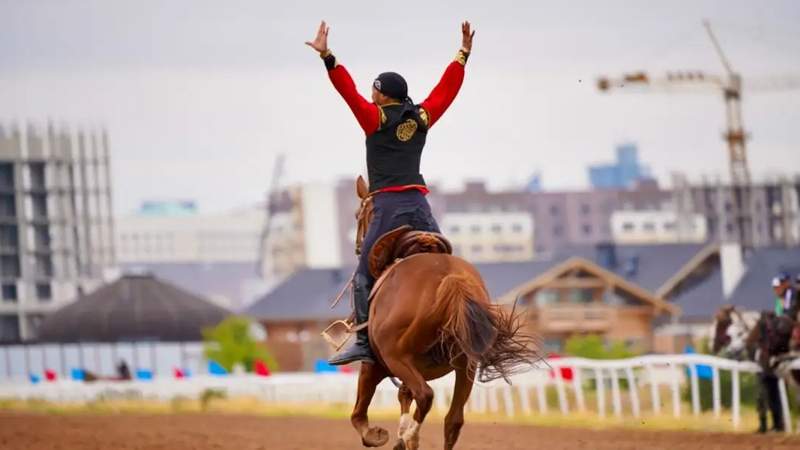
Phys.org: 'Miseries of the Balkhash': Fears for Kazakhstan's magical lake
Lake Balkhash, known as the “pearl of Kazakhstan” is under severe threat from pollution, climate change, and overuse, reports Phys.org, citing AFP.
“All the miseries of the Balkhash are right under my eyes,” fisherman Alexei Grebennikov told AFP from the deck of his boat on the northern shores, which sometimes has salty water, sometimes fresh. This unique lake is seeing a dramatic decline in fish populations due to silting and falling water levels.
“There are fewer and fewer fish, it's catastrophic, the lake is silting up,” warned the 50-year-old.
A dredger to clear the little harbor lay anchored, rusting and unused, off the industrial town of Balkhack, itself seemingly stuck in a Soviet timewarp.
“We used to take tourists underwater fishing. Now the place has become a swamp,” said Grebennikov.
All the great lakes of Central Asia, also known as enclosed seas, share a similar worrying fate.
The Aral Sea has almost disappeared; the situation is alarming for the Caspian Sea and Lake Issyk-Kul in neighboring Kyrgyzstan.
Located on dry lands isolated from the ocean, they are particularly vulnerable to disturbances “exacerbated by global warming and human activities”, according to leading scientific journal Nature.
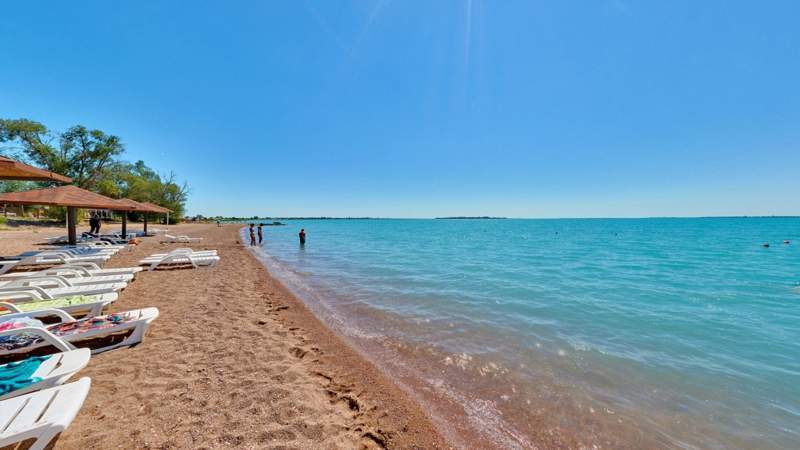
Heritage Daily: Rock art clusters found in Kazakhstan
Archaeologists from the Margulan Institute of Archaeology have discovered several rock art clusters in Kazakhstan’s Almaty region, Heritage Daily reports.
As part of the Serektas Archaeological Expedition, archaeologists have been excavating a series of settlements in the Serektas River valley while also surveying the surrounding landscape.
In the area of the Serektas River gorges, the researchers identified several small campsites from the late Middle Ages, in addition to five rock art cluster sites, one of which depicts an image of a yurt.
Other clusters show zoomorphic depictions of various animals, including the image of a tamga, an abstract seal or stamp used by Eurasian nomads as a Livestock branding.
Tamga were common among nomads throughout Classical Antiquity and the Middle Ages, used to identify a particular tribe, clan or family group.
Excavations at a settlement, designated Serektas-2, have unearthed a large volume of archaeological finds, including 727 fragments of ceramics, 83 stone tools consisting of hammers, polishers, and grinders, a bronze object, as well as 38 bone artifacts made from cattle bone
At the Serektas-1 site, archaeologists uncovered a 6 by 4-meter structure and found 200 bone fragments, over 60 ceramic pieces, spindle whorls, bone awls, iron fragments, glass pieces, and various stone tools like grinders and polishers.
